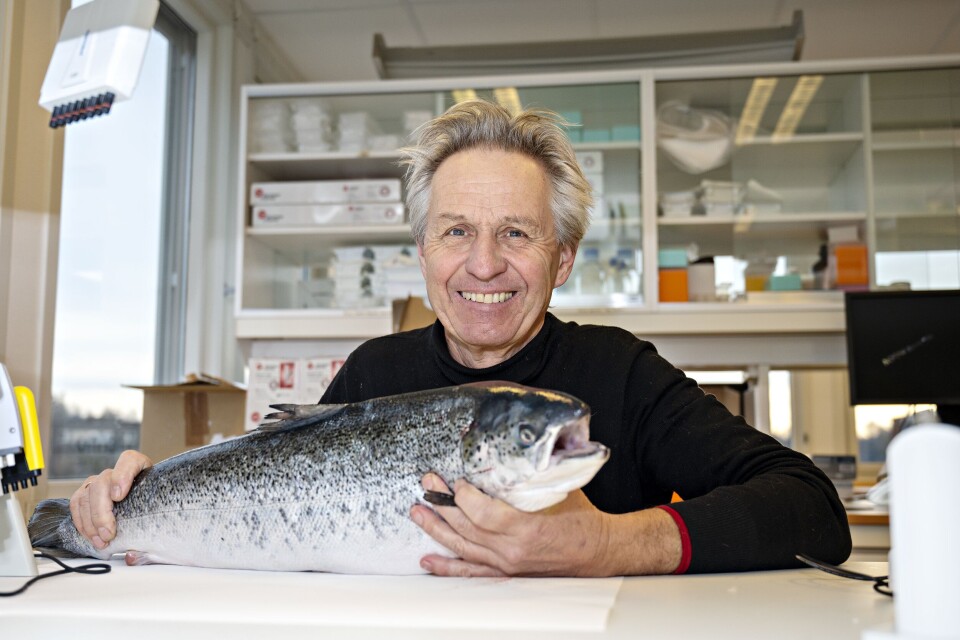
Sterilised salmon 'perform just as well as fertile fish'
Salmon made sterile by a method developed by Norwegian scientists perform at least as well as fertile fish in terms of growth and welfare, a study has shown.
Research institute Nofima and partners have developed the promising sterilisation technique over the past few years. Sterile farmed salmon can limit the effect of escaped farmed salmon in the rivers. Production of sterile salmon can also contribute to better meat quality and less disease and mortality.
In order to be able to continue the Nofima method for practical large-scale production, it is not only a prerequisite that the fish becomes sterile, but also to document that the fish have good health and growth.
Embryo to harvest
Senior Nofima researchers Øivind Andersen and Helge Tveiten have now investigated how well salmon sterilised with the method they developed have managed through life compared to fertile farmed salmon. They have carried out in-depth studies of fish growth, smoltification, stress tolerance, salmon lice infestation and mortality in the sea.
The sterile salmon show production properties that are at least as good as fertile farmed salmon. A severe lice attack towards the end of the period at sea disturbed the data somewhat, but the sterile salmon fared just as well against the lice as the fertile salmon. The researchers have also documented that the sterilised salmon lacked gametes all the way from the embryo to harvest.
The sterilisation method blocks a factor that is necessary for the development of gametes at the embryonic stage, so that the fish never become sexually mature. Apart from the small genitals that lack ova and milt, the sterile salmon have the same external appearance and characteristics as fertile farmed fish.
Large-scale production
There are several ways to make salmon sterile, such as triploid salmon and genetically modified salmon. But triploidly has been rejected in Norway due to welfare problems, and genetically modified salmon are not allowed to be used in production.
Andersen and Tveiten have now started work on various strategies for large-scale production of sterile salmon in collaboration with the aquaculture industry.
The research project is funded by the Fisheries and Aquaculture Industry’s research fund (FHF) and is in collaboration with ova supplier AquaGen and AquaPharma.






















































